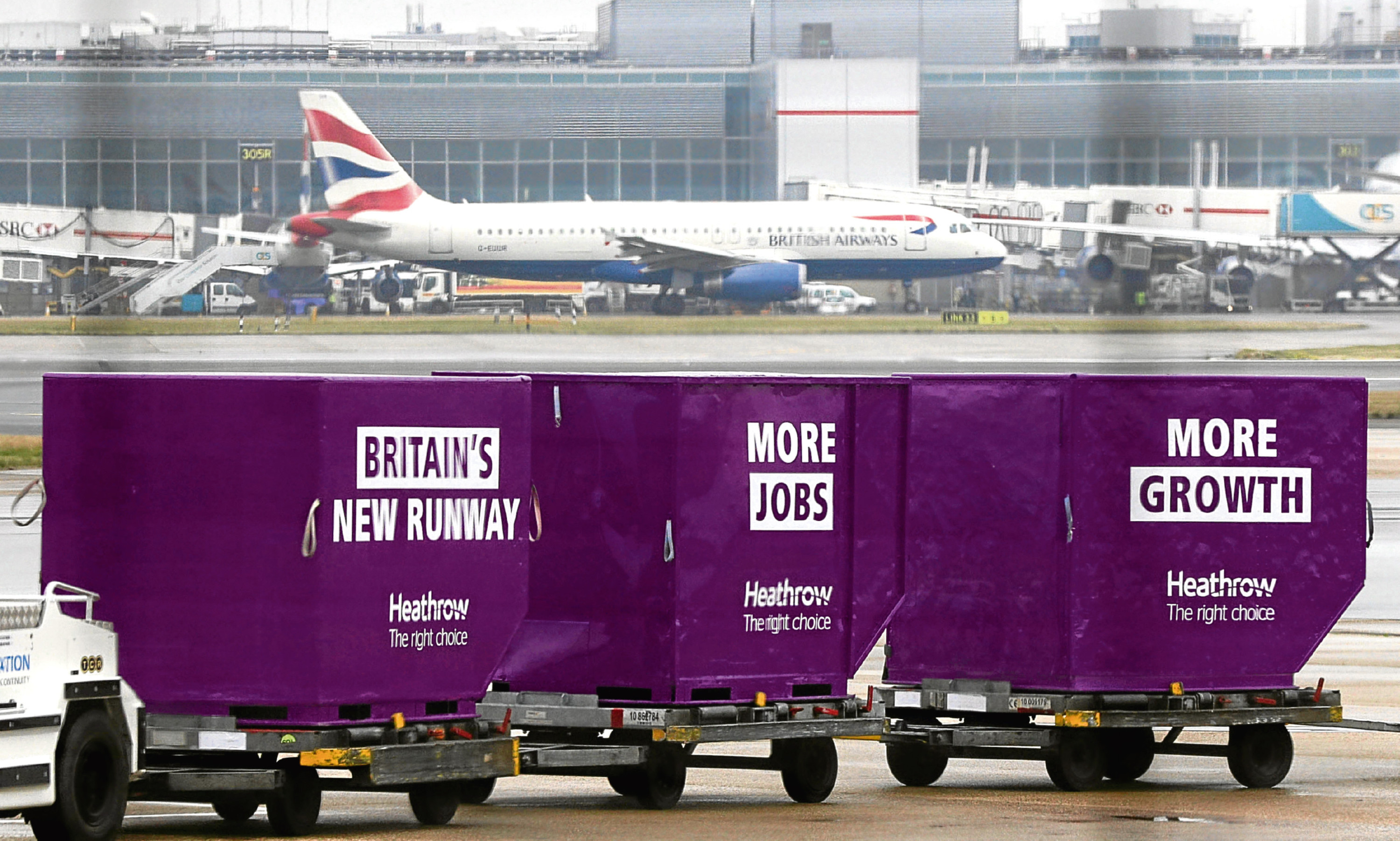The overcrowded South East of England is to get busier still. A new runway is to be built at Heathrow.
The decision has caused one Tory MP to resign and an already fractured Cabinet to split a bit further.
Theresa May was elected in 2010 on a manifesto which ruled out a third runway – and again in 2015.
Her website used to boast of her opposition, carrying a quote from the MP that any development would “devastate” local communities.
Now that David Cameron is gone, it turns out she thinks more tarmac for planes to land on is a good thing.
Her web page has since been taken down in a clumsy bit of revisionist spin.
The puzzle for Scottish politics is not that May’s premiership looks increasingly inept but that the SNP has chosen to support her on this issue.
The development of transport capacity anywhere in the UK is likely to have a beneficial effect on Scotland – infrastructure which brings in more business tends to create a knock-on effect for the whole of the island.
The SNP is correct to say a bigger Heathrow will probably be good for Scotland.
Political puzzle
The Scottish Government has, though, been more than an interested bystander on what is primarily an English issue.
Before the decision was taken, the SNP was issuing press releases supporting a third runway at Heathrow.
Now the decision has been taken, it applauds it, saying it will bring significant benefits to Scotland.
The transport spokesman in the SNP Westminster group is Drew Hendry, who not only approves of the idea but issued a release slamming the Tories for yet more “dither and delay” as the Commons will not get to vote on the matter until the new year.
All of this would make sense if Mr Hendry was a member of a unionist party but is odd for a man and a movement whose political purpose is to end Scottish involvement in UK decisions.
If the SNP is saying a new runway in the South of England is good, then it is also saying it is good Scots get to influence UK airport decisions.
Which rather pulls the rug out from claims that Scotland would be better off independent and with no influence over such matters.
Now, a little bit of hypocrisy is what keeps the wheel of democracy turning. Get too fussy on the idea of intellectual consistency and you’ll go mad.
However, the Nats have not just contradicted their own core argument but also their environmental policy.
The Scottish Government is most proud of setting tough carbon emission targets. It is because of these targets that the government blocks fracking – too much carbon for our dear green planet to cope with.
Yet here is the same party demanding more runways – and fast.
Despite tough carbon targets, the party leadership is in favour of slashing Air Passenger Duty – a tax on each plane ticket. Nicola Sturgeon is explicit in saying with the tax reduced, more people can fly.
Given the support for Heathrow, will the Scottish Government include the increased emissions as part of Scotland’s carbon quota?
The hypocrisy goes further.
The SNP used to claim the high moral ground with a policy of not voting in Westminster on non-Scottish matters.
It overturned this last year with the Westminster SNP leader Angus Robertson saying it would advance a “progressive agenda” for the benefit of people across the UK.
Is this “progressive”? The Scottish Greens don’t think so.
The party’s spokesman John Finnie said: “What is perhaps a surprise is the Scottish Government’s support for (Heathrow), given that it does nothing to advance social justice. Wealthy frequent fliers will benefit, as they will from Scottish Ministers’ desire to cut Air Passenger Duty.”
One is tempted to think that given the Scottish Government’s weird enthusiasm for air transport by slashing Air Passenger Duty and buying Prestwick Airport, it has become captured by the industry’s lobbyists.
Weird enthusiasm
Whatever the detail, it has set itself a dangerous precedent.
Should Theresa May suggest the Scottish block grant be cut to pay for Heathrow’s new runway, the Scottish Government will have no credible resistance.
A First Minister who likes to huddle with the Greens when it comes to UK-wide TV debates now finds herself profoundly in opposition to them.
Tory rebels who don’t like the Heathrow decision have been needlessly provoked to feel anti-Scotland.
Worse – should Labour abstain and Tory rebels vote against the government on Heathrow, it might be SNP votes which win the day for an otherwise embattled May.
All this for an infrastructure project which doesn’t look set to be completed for more than a decade and in a form of transport known to be damaging the planet.
Perhaps until the web of political favours and tactics are exposed, we will never know quite why the SNP was so loud in its support of this controversial decision.
What is clear is that a party which says it want to govern Scotland independently has given an object lesson in the value of influencing UK-wide decisions.
